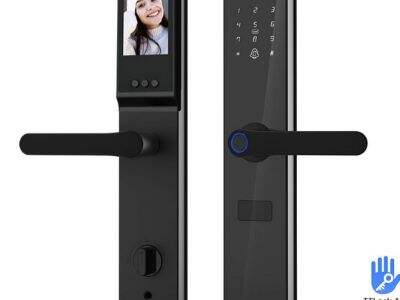Encryption is sort of like slapping a secret code on messages in order to keep them secure. In certain situations it is important to keep our messages very safe — like when we are keeping our home safe. This is where AES-256 encoding comes for Bluetooth smart locks analysis.
AES-256 Byte Encryption and It's Role in Bluetooth Smart Locks
Bluetooth smart locks’ are magic keys that open up front doors when you tap a button on a smartphone. These smart locks rely on Bluetooth to communicate with our devices, so what happens when somebody tries to eavesdrop? That’s where AES-256 encryption steps in.
AES-256 encryption is similar to a super secret language that can only be understood by the smart lock and our device. Human receivers convert that to data, which travels to the smart lock and it’s able to comprehend a manner of locking and unlocking the door. It also mangles the messages the smart lock and our device send to each other, so that external observers can’t figure out what’s being said. This is how our homes stay secure, and it ensures that only a proper person can unlock the door.
Why You Need AES-256 Encryption in Your Bluetooth Smart Lock
It is also the AES-256 encryption that is crucial to maintaining secure Bluetooth smart lock communication. It’s the absence of encryption that means data travelling between the smart lock and our phone could potentially be snooped on and decrypted by anyone with the right know-how. But with AES-256 encryption, our messages are secure, as if they are locked up tight in a treasure chest.
The message protection of AES-256 Encryption
When we employ a Bluetooth smart lock to open a door, our device sends a signal to the smart lock commanding it to open. That is sort of like a secret handshake between our device and the smart lock, and we do not want anyone else to try to horn in on the handshake. That’s where AES-256 encryption enters the picture.
A door behind a locked door Thanks to the AES-256 with which it is encrypted, the signal that our device sends between itself and the smart lock is kept cloaked behind a door of its own. That makes it impossible for anyone who tries to eavesdrop to understand it. AES-256 encryption keeps us safe and secure.
The Advantages of AES-256 Encryption on Bluetooth Smart Locks
One of the big advantages of the AES-256 for Bluetooth smart locks, is its strength. AES-256 encryption is so effective that it’s as if we have a super strong lock on our messages that is virtually impossible for anyone to pick it and steal our information. That provides us some level of comfort that we know our homes are secure.
Another benefit is its speed. Although it’s extremely secure, apartment locks does not affect communication between our device and the smart lock. That means I can unlock quickly and I will not have any wait time opening doors. AES-256 protects our messages as though they were bodyguards that surround our messages around the clock.
How AES-256 Encryption Will Protect Your Users
Privacy matters a lot in our homes and personal detail. apartment door loc can rest assured knowing their data is safe thanks to AES-256 encryption. With AES-256 encryption, only approved users are able to access the smart lock to keep intruders at bay.
In summary, AES-256 encryption is the superhero of Bluetooth smart locks, defending our homes and our data. The AES-256 encryption technology enables users of Bluetooth based smart locks to be assured that their communication is safe and their privacy is not compromised. With AES-256 encryption, our homes are secure like they should be.

 EN
EN
 AR
AR
 DA
DA
 NL
NL
 FR
FR
 DE
DE
 EL
EL
 HI
HI
 IT
IT
 JA
JA
 KO
KO
 PL
PL
 PT
PT
 RU
RU
 ES
ES
 TL
TL
 ID
ID
 VI
VI
 TH
TH
 TR
TR
 FA
FA
 MS
MS
 KK
KK
 UZ
UZ
 KY
KY



